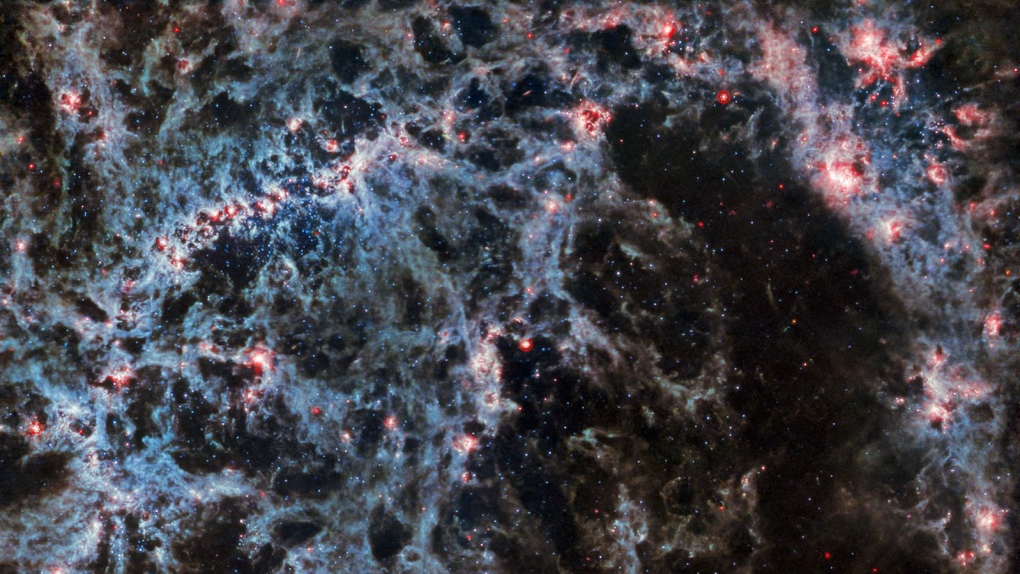
See early stars form in a galaxy 20 million light-years away
CTV
The James Webb Space Telescope set its sights on a galaxy 20 million light-years away, capturing a dazzling star-forming galaxy in images streaked with the signature of passing asteroids.
The James Webb Space Telescope set its sights on a galaxy 20 million light-years away, capturing a dazzling star-forming galaxy in images streaked with the signature of passing asteroids.
A bright band in the upper left corner of the images shows the bright, bar-shaped center of the galaxy, according to a NASA news release.
The NGC 5068 galaxy is a barred spiral galaxy, the same type as our home Milky Way. And the celestial body lies within the Virgo constellation, which is home to an enormous cluster of galaxies.
These new snapshots of NGC 5068 add to a growing repository of data on areas of the observable universe where stars are born. Captured by a variety of instruments from a range of faraway galaxies, these star-forming regions are particularly intriguing to astronomers.
There are two reasons why, according to NASA. One is that studying areas where stars are formed advances astronomers’ understanding of fundamental aspects of the universe — helping to unlock the mysteries surrounding how galaxies form.
“By observing the formation of stars in nearby galaxies, astronomers hope to kick-start major scientific advances with some of the first available data from Webb,” according to NASA.
The other reason these snapshots pique scientists’ interest is that they build on an existing trove of data collected by instruments, including the Hubble Space Telescope and the ground-based European Southern Observatory’s Very Large Telescope in Chile.
